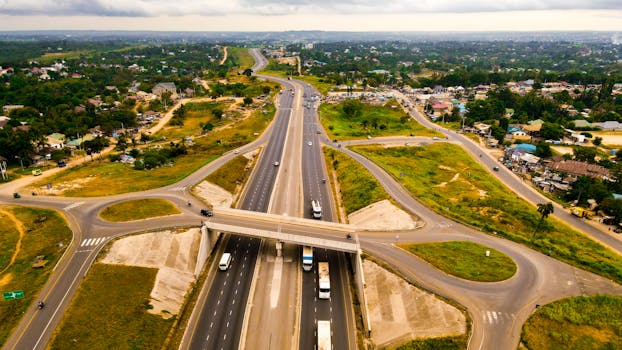The Exciting Future of Automobiles: What to Expect from New Cars in 2025
Takeaways: The automotive landscape is set for a radical transformation by 2025, with advancements in electric vehicles, autonomous driving technology, and enhanced connectivity features. This article delves into the major changes we can expect and highlights the leading manufacturers paving the way for a greener and smarter future.
The year 2025 is poised to be a pivotal moment in the automotive industry, with manufacturers racing to introduce innovative car models that emphasize sustainability, technology, and safety. From electric vehicles (EVs) to connected cars, the new cars coming in 2025 promise to revolutionize the driving experience. In this article, we will discuss the latest trends, groundbreaking technologies, and exciting new models that will shape the future of transportation.
Major Trends Shaping the Automotive Industry in 2025
1. The Rise of Electric Vehicles
As concerns about climate change and fossil fuel consumption grow, the automotive industry is making a significant shift towards electric vehicles. By 2025, we can expect a dramatic increase in the availability of EV models across various segments, catering to a wider audience.
Many manufacturers have committed to phasing out internal combustion engines, investing heavily in developing new electric platforms. Brands like Tesla, Ford, and General Motors are leading the charge with their ambitious plans for EV rollouts by 2025. Innovations in battery technology, including solid-state batteries, are also expected to address range anxiety and charging time, making EVs more appealing to consumers.
2. Advancements in Autonomous Driving Technology
Another significant trend is the advancement of autonomous driving technology. By 2025, we anticipate that several manufacturers will introduce vehicles equipped with Level 4 and Level 5 automation capabilities, allowing for fully autonomous driving in specific conditions.
Companies like Waymo and Tesla are at the forefront of this technology, continuously testing and refining their systems. The integration of advanced sensors, machine learning, and artificial intelligence will enable these vehicles to navigate complex environments safely. This shift not only enhances safety but also changes the way we perceive mobility, making it accessible to a broader demographic.
3. Enhanced Connectivity and Smart Features
In 2025, the concept of a connected car will take on new dimensions. Manufacturers are increasingly incorporating smart technologies that allow vehicles to communicate with each other and with infrastructure. This vehicle-to-everything (V2X) communication will enhance traffic management and improve safety.
Moreover, features like over-the-air (OTA) updates will become standard, allowing manufacturers to continuously improve vehicle performance and add new functionalities post-purchase. Infotainment systems will also evolve, providing seamless integration with smartphones and other devices, making the driving experience more enjoyable and efficient.
Key Players and Their Upcoming Models
1. Tesla’s Vision for 2025
Tesla has long been a leader in the electric vehicle space, and its vision for 2025 includes several exciting models. The highly anticipated Tesla Cybertruck, with its futuristic design and robust features, is expected to debut fully by 2025. Additionally, plans for the next-generation Roadster promise unprecedented performance and range.
Tesla is also focusing on expanding its battery production capabilities with the Gigafactory, which will support the growing demand for EVs. The company’s commitment to sustainability and innovation positions it as a key player in the 2025 automotive landscape.
2. Ford’s Electrification Strategy
Ford is making significant strides in electrification, with plans to invest over $22 billion in electric vehicles through 2025. The upcoming Ford F-150 Lightning, an electric version of their best-selling truck, is expected to set new standards for performance and utility.
Additionally, Ford is working on expanding its EV lineup with models like the Mustang Mach-E, which has already garnered attention for its impressive range and performance. By 2025, Ford aims to be a major contender in the EV market, appealing to both traditional truck enthusiasts and new customers seeking eco-friendly options.
3. General Motors’ All-Electric Future
General Motors (GM) is committed to an all-electric future, with plans to introduce a range of new EV models by 2025. The Chevrolet Silverado EV is set to compete in the truck segment, while the GMC Hummer EV aims to redefine the capabilities of electric off-road vehicles.
GM’s Ultium battery platform is designed to power a variety of vehicles across different segments, providing flexibility and scalability. The company’s ambitious goals reflect a broader industry trend towards sustainability and innovation, positioning itself as a leader in the transition to electric mobility.
Innovative Technologies Transforming the Automotive Experience
1. Battery Technology Breakthroughs
Battery technology is crucial for the success of electric vehicles, and significant advancements are on the horizon. By 2025, we expect to see widespread adoption of solid-state batteries, which promise higher energy densities and faster charging times compared to traditional lithium-ion batteries.
These breakthroughs will not only enhance the performance of EVs but also contribute to reducing costs and improving safety. Companies like QuantumScape are leading the charge in solid-state battery development, aiming to revolutionize the automotive industry.
2. Advanced Driver-Assistance Systems (ADAS)
As manufacturers race to enhance vehicle safety, Advanced Driver-Assistance Systems (ADAS) will play a vital role in the new cars coming in 2025. These systems utilize a combination of sensors, cameras, and artificial intelligence to assist drivers in various situations.
Features such as adaptive cruise control, lane-keeping assistance, and automatic emergency braking are becoming standard in many new models. By 2025, we can expect more sophisticated ADAS technologies that will pave the way for full autonomy in the future.
3. Sustainable Manufacturing Practices
As the automotive industry shifts towards electric vehicles, manufacturers are also focusing on sustainable manufacturing practices. By 2025, many companies will adopt environmentally friendly processes that reduce waste and carbon emissions.
Efforts include using recycled materials, optimizing supply chains for minimal environmental impact, and implementing energy-efficient production methods. This commitment to sustainability is not only beneficial for the planet but also resonates with consumers who prioritize eco-conscious brands.
The Impact of Policy and Regulations on 2025 Vehicles
1. Government Incentives for Electric Vehicles
Government policies play a crucial role in shaping the automotive landscape, especially regarding electric vehicles. By 2025, we can expect to see more robust incentives for EV purchases, including tax credits, rebates, and grants aimed at encouraging consumers to transition to electric mobility.
These incentives are designed to make EVs more affordable and accessible, addressing one of the significant barriers to adoption. Additionally, governments may implement stricter emissions regulations, pushing manufacturers to accelerate their electrification efforts.
2. Global Emission Standards
As countries around the world strive to meet climate goals, global emission standards are becoming increasingly stringent. By 2025, automakers will need to comply with these regulations to avoid hefty penalties and maintain market access.
This regulatory environment will drive innovation, prompting manufacturers to invest in cleaner technologies and develop more efficient vehicles. The push for lower emissions will influence not only the types of vehicles produced but also the technologies employed in manufacturing.
3. Urban Mobility Initiatives
With urbanization on the rise, cities are implementing mobility initiatives aimed at reducing congestion and improving air quality. By 2025, we can expect to see more cities adopting low-emission zones and promoting public transportation options.
These initiatives will encourage the adoption of electric and shared mobility solutions, influencing consumer preferences and driving demand for innovative transportation options such as e-scooters and car-sharing services.
Consumer Preferences and Market Dynamics
1. Shift towards Eco-Friendly Vehicles
Consumer preferences are rapidly evolving, with a growing emphasis on sustainability and eco-friendliness. By 2025, a significant portion of car buyers is expected to prioritize electric and hybrid vehicles over traditional gasoline-powered models.
This shift is driven by increasing awareness of environmental issues and the desire for lower operating costs associated with EVs. As manufacturers respond to these changing preferences, we can anticipate a broader range of eco-friendly options becoming available in the market.
2. The Demand for Customization and Personalization
Today’s consumers seek more than just a vehicle; they desire a personalized experience. By 2025, we can expect to see manufacturers offering more customization options, allowing buyers to tailor their vehicles to their preferences.
From exterior colors to interior materials and technology packages, the ability to personalize vehicles will enhance consumer satisfaction and drive sales. This trend will also be supported by advancements in manufacturing processes that allow for greater flexibility in production.
3. The Role of Digital Retailing
The COVID-19 pandemic accelerated the shift towards digital retailing in the automotive industry, and by 2025, this trend will continue to reshape how consumers purchase vehicles. Online platforms will become increasingly important, allowing buyers to research, configure, and purchase vehicles from the comfort of their homes.
As manufacturers and dealerships adapt to this digital landscape, we can expect enhanced online tools and resources that facilitate the buying process and improve the overall customer experience.
Conclusion
The automotive industry is on the cusp of transformation as we approach 2025. With advancements in electric vehicles, autonomous driving technology, and sustainable practices, the new car models set to hit the market promise to reshape our driving experience and contribute to a greener future. The excitement surrounding these innovations reflects the industry’s commitment to meeting the evolving needs and preferences of consumers, positioning the automotive sector for a remarkable future.






